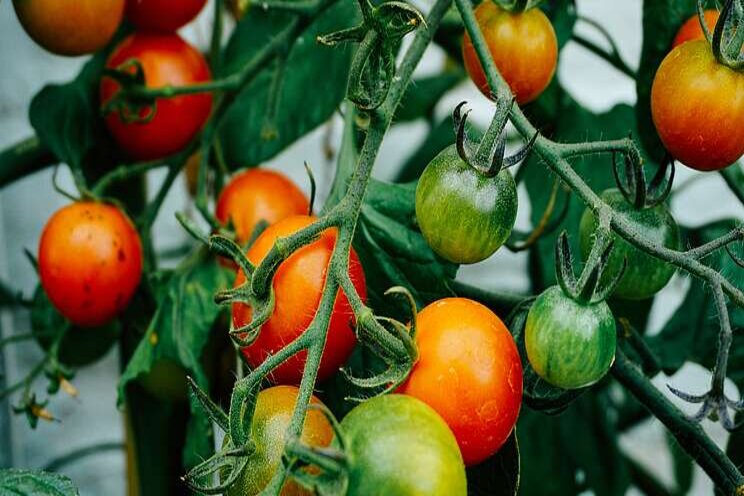Best time to plant & grow spring veggies
Added on 31 March 2020

Here's what you need to know about the best time to plant, grow and harvest spring veg.
Peas
You should start planting your pea seeds from March to early June.
The Royal Horticultural Society (RHS) says that of all the pea varieties, the easiest types to grow are mangetout and sugar snap peas.
Photo by ksenia-makagonova, unsplash
You should never sow pea seeds in cold, wet soil and acidic soils should be limed. In general, peas prefer cooler springs.
To plant, you should make a flat-bottomed trench 5cm deep and 15cm wide. Place the seeds evenly in the trench, roughly 7.5cm apart from each other, then cover with soil.
If you want to grow your peas indoors, the RHS says they should be "sown in lengths of guttering to germinate indoors for a head start in February or March".
When flowering begins, water the peas well for two weeks after, adding mulch around the base to preserve moisture.
You'll also need to provide climbing support for your peas to latch on to, like a trellis, bamboo canes or netting.
Pods will be ready to harvest between June until October - you'll know they're ready when pods are well filled. You should pick the pods regularly or else the plants will stop producing the peas.
Mangetout and sugar snap peas should be harvested when the pods are about 3 inches long and the peas are just starting to develop.
Tomatoes
Tomatoes are easy to grow from seed, and you can grow them from late March to early April if you're planning on growing them outdoors. If you're using a greenhouse, you would have had to give them a head start, sowing from late February to mid March.
Start by sowing the seeds in small pots indoors, using a propagator, or the RHS advises you can place the pots in a plastic bag and keep them on the windowsill.
You'll then have to transfer the plants into 9cm pots when two true leaves have formed, or plant them 45 - 60cm apart outside.
If you're growing cordon tomatoes, provide them with support for climbing using, for example, a bamboo cane. Alternatively, if you're growing bush tomatoes, they do not need support.
Water your tomatoes regularly, keeping the soil and compost moist. Every 10 to 14 days, you should feed them with a balanced liquid fertiliser.
You'll know your tomatoes are ready to harvest when they are ripe and fully coloured.
The RHS says: "At the end of the growing season, lift the plants with unripe fruit and either lay them on straw under cloches or place fruits in a warm, dark place to ripen.
"Alternatively, you can place the green fruit in a drawer next to a banana, which aids ripening."
Runner beans
Of all the vegetables to grow, runner beans are the easiest.
Sow them indoors (preferably in a greenhouse) from mid-April and then they can be planted out from late May. The runner bean seeds need warm conditions to germinate.
Fill pots (7-8cm) with moist, multipurpose soil and sow one seed per pot, about 5cm deep. Water the pots well. Grow in warm conditions, such as a greenhouse or a sunny windowsill.
A traditional way of preparing the soil is to make a bean trench.
You can make a bean trench by:
- Digging out a trench 3ft wide and 2ft deep, loosening the soil at the base by forking it over- Scatter well rotted manure or home-made compost in the bottom of the trench and mix it all together. Return the improved soil to the trench and add some pelleted poultry manure- Leave soil to settle for at least two weeks before planting
Since runner beans are strong climbers, you should also make a support using, for example, bamboo canes.
In late May or early June, you can plant your pot raised beans, one plant per bamboo cane.Alternatively, simply sow your chosen runner beans from mid-May to July, 5cm deep, two seeds per 8ft bamboo cane, spaced 15cm apart.
You'll know your beans are ready to harvest when the pods are less than full length, snap easily and the seeds are still small and pale in colour. This will usually be at about 15-20cm long.
Pick the beans regularly to encourage continuous pod production, every two or three days preferably.
Brussels sprouts
While Brussels sprouts might be considered one of the more controversial vegetables, they taste much better from the garden than being bought frozen from the shop.

Photo by keenan-loo, unsplash
According to the RHS, you should sow your seeds from early March to early April under "cloches or fleece or in a coldframe", about half an inch deep in a seed bed in rows six inches apart.
When the young plants are about 10-15cm high, from mid-May to early June, and have seven true leaves, you should transplant them to their growing positions, leaving two feet between plants and two-and-a-half feet between rows.
Before planting, make sure the plants have been watered well, and water again after transplanting. Choose a nice, sheltered and sunny site to plant your sprouts, protected from strong winds.
Water them every 10 to 14 days in periods of dry weather.
Your early varieties can be harvested from August - you should start from the lowest sprouts, when they are tightly closed, firm and about the size of a walnut. You can snap them off when a sharp, downward tug.
Source: Yorkshire Post
Source: Yorkshire Post
More news















